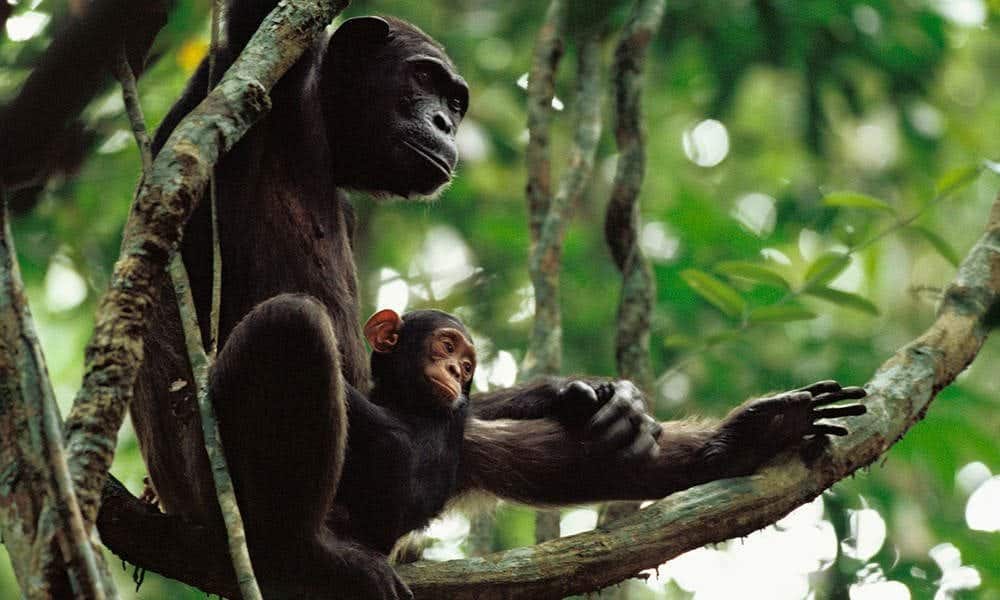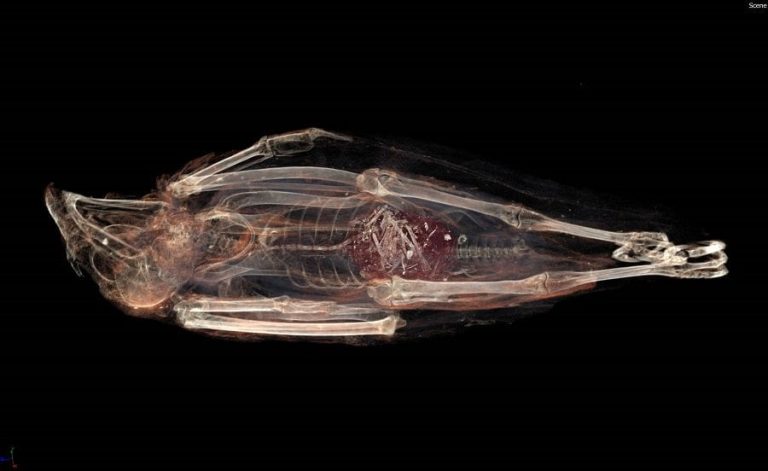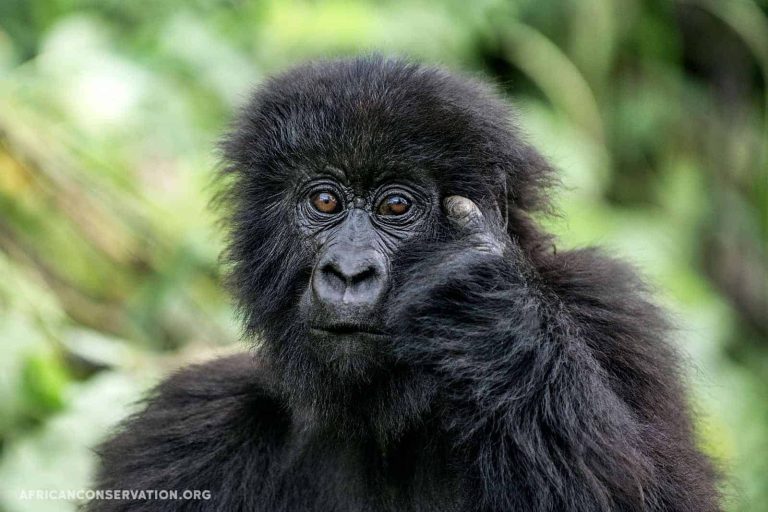Wild Chimpanzee Mothers Teach Young To Use Tools, Video Study Confirms

The first documented evidence of wild chimpanzee mothers teaching their offspring to use tools has been captured by video cameras set to record chimpanzee tool-using activity at termite mounds in the Nouabalé-Ndoki National Park in the Republic of Congo, according to new research from anthropologists at Washington University in St. Louis.
“Wild chimpanzees are exceptional tool users, but in contrast to humans, there has been little evidence to date that adult chimpanzees teach youngsters tool skills,” said Stephanie Musgrave, the study’s first author and an anthropology graduate student in Arts & Sciences.
“We found that mother chimpanzees in the Goualougo Triangle teach by transferring termite-fishing probes to their offspring,” Musgrave said. “In this population, chimpanzees select specific herb species to make their fishing probes, and they produce probes that have a particular brush-tipped design. By sharing tools, mothers may teach their offspring the appropriate material and form for manufacturing fishing probes.”
Embargoed for release at 5 a.m. Eastern on Oct. 11 in the journal Scientific Reports, the study is based on research conducted in partnership with the Wildlife Conservation Society, the Lincoln Park Zoo, the Max Planck Institute and Franklin and Marshall College. The findings have important implications for the evolution of teaching.
“It is easy for us to take for granted the importance of sharing information to learn complex skills, as it is ubiquitous in humans,” said Crickette Sanz, associate professor of biological anthropology in Arts & Sciences at Washington University and co-author of the study. “Our research shows that the evolutionary origins of this behavior are likely rooted in contexts where particular skills are too challenging for an individual to invent on their own.”
Musgrave, Sanz and colleagues used video to capture examples of wild chimpanzee mothers transferring specialized termite-gathering tools to less-skilled, immature chimpanzees. These transfers, which are costly to tool donors but beneficial to tool recipients, meet the scientific criteria for teaching in wild apes.
“Tool transfers are costly for mothers, whose ability to forage for termites is reduced, but are beneficial for offspring, who gain increased opportunity to learn tool skills and gather termites. This is the first such evidence satisfying these criteria for teaching in wild apes,” Musgrave said.
“Identifying teaching among wild animals is difficult because one has to quantify the impact of possible teaching behaviors on both the teacher and the learner,” Musgrave said. “Using video footage from remote camera traps placed at termite nests in the chimpanzees’ home range, we were able to observe and quantify how sharing tools affected those who relinquished their tools as well as those who received them.”
Chimpanzees are exceptional among animals for their remarkable propensity to make and use tools. Since different groups of chimpanzees use different types of tools, the teaching process also may need to be customized to address local conditions.
“Studying how young chimpanzees learn the tool skills particular to their group helps us to understand the evolutionary origins of culture and technology and to clarify how human cultural abilities are similar to or different from those of our closest living relatives,” Musgrave said.
The findings have interesting implications for identifying the cognitive underpinnings of teaching. In humans, teaching involves an understanding of others’ abilities and the intention to help them learn. In this study, chimpanzee mothers both anticipated the youngsters’ need for a tool and devised strategies to reduce the effort necessary to provide them.
In examples captured in this study’s videos, mothers sometimes bring multiple tools to a termite nest; they may also divide their fishing probe in half lengthwise, giving one-half to their offspring and keeping the other half. This strategy provides their offspring with a usable tool without compromising their own ability to gather food, Musgrave said.
Washington University pioneered the use of remote video technology to study the behavior of wild chimpanzees in Congo, and now it is used at nearly every ape research site across Africa. “It is a very effective means of monitoring wildlife without increasing human impact. Our camera array also provides a means of monitoring the health of the forest, as other endangered species such as western lowland gorillas, forest elephants, and leopards are ‘captured’ on film,” Sanz said.
“In addition to our traditional tracking of wild chimpanzees through the forest each day, this remote video technology has been a force multiplier in expanding the scope of our research to several other chimpanzee communities,” Sanz said. “We have observed a generation of chimpanzee kids learn how to use these tool sets, without having to spend a decade habituating them to human presence or risk exposing them to anthropogenic diseases.”






